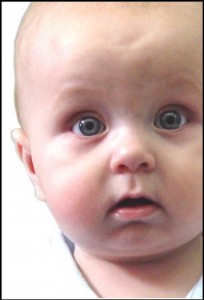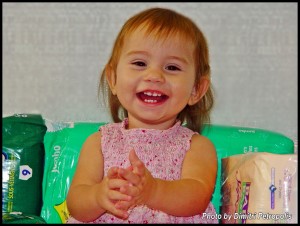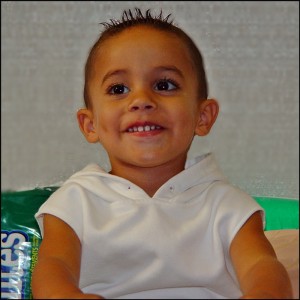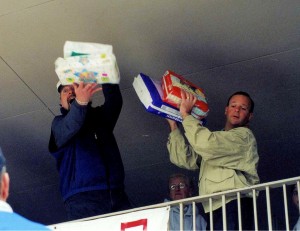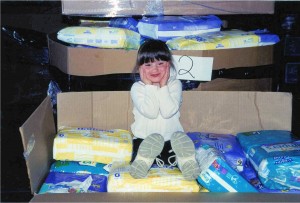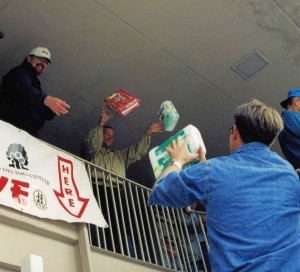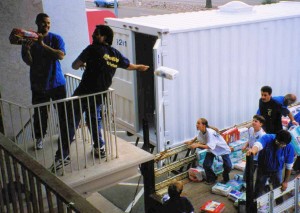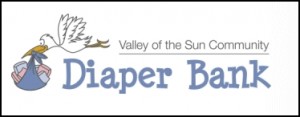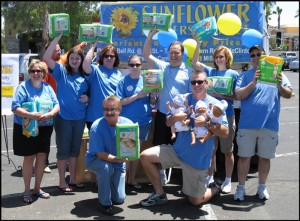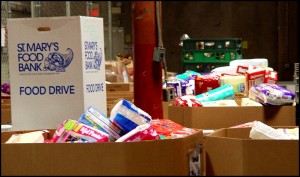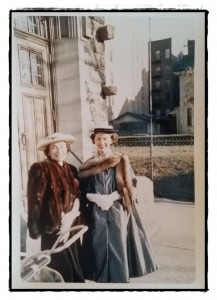 This is the last post in my five-part series, honoring the release of the 2nd Edition of FriendRaising.
This is the last post in my five-part series, honoring the release of the 2nd Edition of FriendRaising.
To read this series from the beginning, head here.
So far in this series, I’ve taken highlights from the book about our days building the first-ever community-wide Diaper Bank, in Tucson, Arizona!
Today’s story is not about diapers, though. It is about friendship – the real meaning of the word, not the euphemism for “donor.”
(From FriendRaising page 29)…
When my mom’s best friend Eileen passed away a few years ago, Eileen and my mom had been friends for almost 60 years.
They met in their late teens, working as secretaries in New York City’s garment district in the early 1940’s. Meeting at the elevator, they realized they were both walking to the same subway. From the subway, they realized they were both getting off at 183rd Street. They were both young and cute and sassy, ending the day laughing on the way home. They were neighbors, and they became friends.
They married within a few years of each other, both finding men who would be by their sides until parted by death. It had never occurred to them that their husbands would not get along, but in fact that is what happened. It never occurred to them that they would move to what might as well be different parts of the universe – suburbs at opposing ends of the city, with a 2 hour drive if there was no traffic. But that is what happened as well.
 Yet they remained as close as if they still lived within blocks of each other.
Yet they remained as close as if they still lived within blocks of each other.
When Eileen was diagnosed with Multiple Sclerosis in her late 20’s, and through the ups and downs of the years she battled her illness, Eileen and my mom were together. When my mother lost her first child early in her marriage, and then later, through the sudden loss of the husband she adored, Eileen and my mom were
together. Through the all-consuming days of raising their families, the distance between them, the trials of their lives – Eileen and my mom were together.
After my dad died, my mom made the hardest decision of her life – to move 3,000 miles from the place she had called home for 65 years, to the desert in Tucson to be near my family. And within just a few years, finding it more and more difficult to maneuver her wheelchair in the snow and slush, Eileen and her husband moved 2 blocks away from my mom.
After all those years, they were once again neighbors and friends.
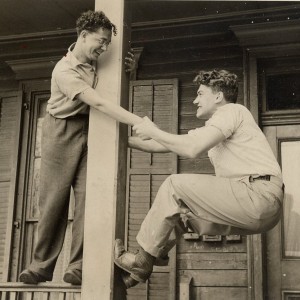 To the end, they could talk about anything. To the end, they understood each other. They trusted each other, depended on each other, were generous and kind to each other, protective and accepting of each other, of their kids and grandkids. And to the end, they continued to laugh – Eileen, so debilitated by 45 years of her illness, and my mom, nearing 80 years old herself. When they were together, they remained as cute and sassy as those days when they had first met, talking about boys and giggling on the way home from work.
To the end, they could talk about anything. To the end, they understood each other. They trusted each other, depended on each other, were generous and kind to each other, protective and accepting of each other, of their kids and grandkids. And to the end, they continued to laugh – Eileen, so debilitated by 45 years of her illness, and my mom, nearing 80 years old herself. When they were together, they remained as cute and sassy as those days when they had first met, talking about boys and giggling on the way home from work.
That is friendship.
And that is what this book is about.
Friendship is about kindness and generosity and compassion. It is about reciprocity, about that 2-way street of dependability, trust, nurturing. It is about feeling protective, wanting to ensure no harm comes to your friend.
Friendship is not about what we get, but what we give. It is about gratitude, graciously giving thanks for the gift of that friendship.
Friendship is about the third entity that is created when we are together – not “me” and “you”, but the “us” that is more powerful than simply 2 individuals coming together.
Friendship rejoices when there are reasons to celebrate – both the big things and the little things (especially the little things). And friendship feels real pain when one of those friends is suffering.
Friends know each other better than anyone else in the world. When spouses are also friends, when parents and children are also friends, outsiders can tell just by watching them together. There is joy surrounding them.
Friendship can grow slowly and consistently over time, or it can hit you between the eyes the moment you meet, as if you have known each other all your lives. We cannot force it either way, but fast or slow, when it is right, we both know it.
Friends share advice, wisdom, and yes, gossip. Friends trust that what their friend says is true. They acknowledge each others’ flaws and do not let foolish things get in the way of their friendship.
 Long term friends find joy in watching each other change and grow over time.
Long term friends find joy in watching each other change and grow over time.
It is not surprising the producers of the old television show “Friends” chose the theme song they did, because if there is any theme that sums up friendship, it is those words: “I’ll be there for you.”
That is what this book is about. When you engage with members of your community in real friendship – not that euphemism for wanting their money, but true friendship – your community will never let your mission die. And that is because your friends will be part of that “us” you have created – that thing that is bigger than each of you separately could ever be – the us of a community working together to build a better place to live.
You will no longer be just neighbors. You will be real friends.
I hope you’ve enjoyed this series of excerpts from the book. It has warmed my heart to remember these stories, and to re-tell them here.
And yes, that is not only a photo of my mom and Eileen, but my dad and his best friend from childhood as well – a man who was his best friend for 60 years until the day my dad died. When friendship happens like that, it is a thing to cherish, not just in photos, but in our hearts. I hope these excerpts have inspired you to find true friends for your cause. Because really and truly, there is nothing that makes it all possible like a true friend.
To read more from FriendRaising, click here to download portions as a PDF.
